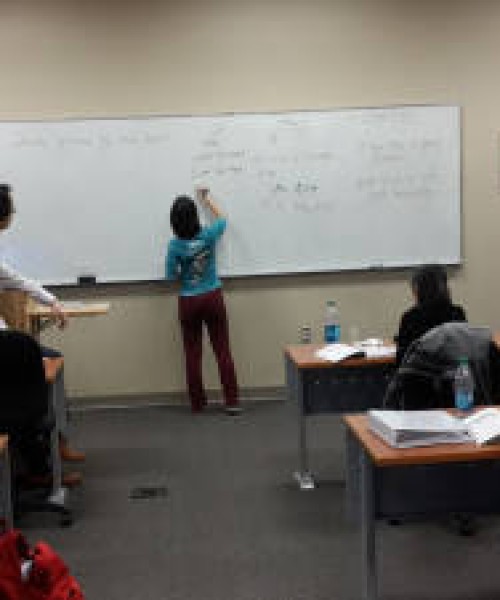Bacterial Culture And Antibiotics Susceptibility Testing Biology Essay
Published:
Background: bacterial adherence is the first step in biofilms formation which may contribute to the persistent nature that characterizes CRS. So the aim of this study was to evaluate the difference between recalcitrant CRS with (CRSwNP) and without nasal polyposis (CRSsNP) as regard to bacterial adherence together with presence, manner and stage of bacterial biofilms. This can allow development of effective strategy of management to each category of the disease.
Patients and methods: Ten normal subjects with obstructing concha bullosa and twenty adult CRS patients who failed medical treatment and subjected for endoscopic sinus surgery were enrolled in this prospective controlled study: 10 patients with (CRSwNP) and 10 patients with (CRSsNP). Scanning electron microscopy (SEM) was done for paranasal sinuses tissue samples. Bacteriological culture and study of bacterial adherence using tissue culture plate method which was measured quantitatively by a micro ELISA auto reader.
Results: Coagulase +ve staphylococci were the most common cultured planktonic bacteria in (CRSsNP) 6/9(66.6%) while Coagulase -ve staphylococci were the most cultured bacteria in (CRSwNP) 3/7(42.8%). Strongly adherent bacteria were significantly identified in (CRSsNP) 6/9 (77%) versus non adherent/ weekly adherente bacteria in (CRSwNP) in 6/7(85%). Sixty seven percent of the cultured Coagulase positive staphylococci aureus were strongly adherent bacteria.
Conclusion: Positive bacterial biofilms were present in all the cases of recalcitrant CRSsNP and CRSwNP in comparison to its absence in normal control. In CRSsNP more longitudinal growth of bacterial biofilm with advanced stage and more bacterial adherence were identified. This can lead to more inflammation with more acute exacerbations and complications. In CRSwNP widespread bacterial biofilms on the transverse axis in lower stage with no/low adhesion can explain its association with prolonged inflammations coupled with more mucosal tissue damages.
Introduction:
Chronic rhinosinusitis is a group of disorders with multi-factorial etiology characterized by inflammations of the nasal and paranasal sinus mucosa for at least 12 consecutive weeks.(1) It has a high impact on individual quality of life and economic society expenditures. CRS patients can improve following appropriate medical and/or surgical therapies but a subgroup of patients will maintain the recalcitrant nature of the disease. Such inflammatory process is known to manifest as polypoid and nonpolypoid forms (CRSwNP vs CRSsNP).These distinct histologic patterns were seen besides in clinical, radiological, and treatment responses. At cellular and immunological levels the presence or absence of nasal polyps usually correlates with eosinophilic (TH2) or neutrophilic (TH1) inflammations, respectively. (2,3) Although there are no sharp borders exist, such categorization can allow research about etiology and treatment to be achievable.
While there is little debate regarding an association between bacteria and acute rhinosinusitis, the role of bacteria in the pathogenesis of CRS is still indistinct. Recently, it has become clear that the related bacteria to CRS mucosa exhibit many of the hallmarks of multicellular organisms when they are growing as biofilms typically surrounded by a matrix of extracellular polymeric substances (EPS) and communicating among each other using quorum-sensing. (4,5,6)The criteria of this bacterial biofilms in each category of the disease (CRSwNP vs CRSsNP) were indistinguishable and not studied yet. Whether or not these bacteria are the etiopathological cause of the disease, these bacteria provide multiple expressions of virulence that individual (plankotonic) free-swimming bacteria do not possess. Such virulent criteria can aggravate the disease process and constitute the main guard against antibiotics. This multiple population-level virulence traits are associated with chronic or recalcitrant rhinosinusitis (7), whereas individual bacterial virulence attributes are combined with acute infections of the nose and paransal sinuses. This facilitates understanding the success in fighting the former, but our disappointment in managing the latter.
Microbial adhesion is the initial step in the formation of a biofilms. (5) It provides two vital tasks for targeting the bacteria to its specific niche and staying away from being flushed away. This step is followed by accumulation of bacteria as micro-colony and then as a two dimensional bacterial colony arrangements with extracellular matrix. With maturation and vertical growth a three dimensional structure is pursued resulting in towers with intervening water channels and increase of polymeric extracellular matrix. Lastly, shearing forces can induce detachment of free living bacteria and its dispersal to colonize far niches. (6) As bacterial adherence is the first step in formation of bacterial biofilms. Identification of the degree of such virulent criterion and estimation of its response to different kinds of antibiotics, can allow future innovation of novel treatment modalities that can counteract biofilm formation in early step in each categories of CRS.
So the aim of this study was to evaluate the difference between recalcitrant CRS with and without nasal polyposis as regard to bacterial adherence, its response to antibiotics together with presence, manner and stage of bacterial biofilms. This can allow searching for effective strategy of management to each category of the disease.
Patient and methods:
Twenty CRS adult patients and ten normal controls (with obstructing concha bullosa) were enrolled in this prospective study. All patients were scheduled for functional endoscopic sinus surgery (FESS) after failure of medical treatment. The criteria for enrollments in the present study included: symptoms and signs of rhinosinusitis lasting for at least 3 months with nasal endoscopic findings of CRS confirmed by soft tissue involvement of the paranasal sinuses on the CT scan. Patients with cystic fibrosis, primary ciliary dyskinesia, or underlying immunosuppressive disorders (HIV, insulin-dependent diabetes mellitus, and renal disease) were excluded. Routine patient demographics were collected, including age and sex. Each patient had endoscopic assessment with grading of polyps according to Lund- Kennedy score (8) and a CT scan that was graded for a Lund-Mackay score (8). The Ethics Committee of the hospital approved the study, and the patient gave an informed consent.
- Specimens Collection:
In the operating room, before the endoscopic sinus surgery was started, endoscopic guided middle meatus swabbing were collected under general anaesthesia using an aseptic technique (9). Samples were rapidly transported to the Menoufyia collage microbiology laboratory for Gram staining, culture, and identification.
Endoscopic sinus surgery was done in all the cases with anterior posterior approach and this was the first sinonasal surgical interference for the patients. Each obtained specimen from each involved sinuses from the study group was washed in a sterile saline solution and divided into 2 fragments. One sector was processed for bacterial culture. The other sector was fixed in Kamovsky buffer (2.5% glutaraldehyde, 1.5% paraformaldehyde, 0.1 mol/L cacodylate, and 0.05 mol/L sucrose) at 4°C and sent for scanning electron microscopy (SEM).
-Biofilm detection by SEM:
Two rinses of 10 minutes each were carried out for the specimens for SEM using 0.1 M Sorensen's buffer. The specimens for SEM was washed in sodium Cacodyiate for 5 minutes, and immersed in 1% Osmium tetroxide for 1 hour. Then it was washed again for 5-minutes in sodium Cacodylate and was dehydrated with upgraded ethanol series (30%, 50%, 70%, 90%, and 100%). Finally the tissue was washed with HMDS (Hexamethyl-disilavane) 5 times for 20 minutes. A few drops of HMDS were then placed on the samples and left to dry overnight in the hood. Samples were then mounted and gold sputter coated in final preparation for imaging. Imaging was done at the unit of electron microscopy of Ain Shams University by using scanning electron microscope (Philips XL 30 SEM, Eindhoven, The Netherlands).
Biofilms were rated by a panel of three blinded expert observer for the presence or absence of biofilms, manner, stage of development (5 stages: adhesion- aggregation as microcolony- two dimensional aggregation-three dimensional aggregation- three dimensional aggregation with dispersion) and mucosal changes.
-Bacterial culture and antibiotics susceptibility testing:
Clinical specimens were identified after plating and incubation according to standard procedures (9). Correct speciation of microorganisms was done using the Vitek2 system (Biomerieux, Marcy l'Étoile, France) for gram-positive and gram-negative strains.
Antibiotic susceptibilities were done for the isolates by disc diffusion method according to standard procedures.(10) All procedures were conformed to according to guidelines published by the CLSI (formerly NCCLS). (10)
-Bacterial adherence:
Tissue culture plate method was used as described by other researchers (11,12). We screened all samples for bacterial adherence detection. Isolates from fresh agar plates were inoculated in its respective media and were incubated for 18 hour at 37°c and diluted 1 in 100 with fresh media.
Individual wells of sterile polystyrene 96 well flat bottom tissue culture plates' wells were filled with 0.2 ml aliquots of the diluted cultures. The tissue culture plates were incubated for 18 hours and 24 hours at 37°c. After incubation content of each well was removed by tapping the plates. The wells were washed four times with 0.2 ml phosphate buffer saline. Adherent bacteria in plate were fixed with sodium acetate 2% and stained with crystal violet 0.1%. Excess stain was rinsed off. Adherent bacteria usually adhere on all side wells and were stained with crystal violet. Optical densities (OD) of stained adherent bacteria were determined with a micro ELISA auto reader at wave length of 570 nm with photometer switched to the single wave length mode ( model MR 580 Dynatech Laboratories Inc. , m Alexandria Va.). These OD values were considered as an index of bacteria adhering to surface and forming biofilms.
Testing was repeated three times and the data was then averaged and standard deviation was calculated.
Mean OD values <0.120 was considered non adherent, 0.120-0.240 weakly adherent and >0.240 strongly adherent.
Results: Normal control and patient demographic data were tabulated in table 1. Negative cultures were observed in 8/10 (80%) of the cases with culture of Coagulase negative Staphylococci in 2/10 (20%). Such bacteria in those 2 cases were strongly adherent bacteria. Using SEM imaging, a normal sinonasal mucosa with a superficial epithelium formed by ciliated and goblet cells were observed without bacterial biofilms (Fig 1).
In CRSsNP patients positive culture results were observed in 9/10 (90%) and in 7/10 (70%) of CRSwNP (table 2). Mixed bacterial cultures were identified in 1/9 (11%) of the positive cultures patients with CRSsNP and in 3/7 (42.8%) of the positive cultures of CRSwNP patients. Strongly adherent bacteria were identified significantly in CRSsNP 6/9 (77%) versus significant detection of non adherent/ weakly adherent bacteria in 85% in CRSwNP (table 2). Sixty seven percent (5/8) of Coagulase positive staphylococci aureus bacteria isolates were strongly adherent. Such strongly adherent coagulase positive staphylococci were sensitive to the following antibiotics: Ciprofloxacin in 4/5 (80%), vancomycin in 4/5 (80%),Impenim in 4/5 (80%), Cefuroxime in 2/5 (40%),Ceftriaxone in 1/5 (20%).
Bacterial biofilms were observed in all the twenty patients (10 patients with CRSwNP and 10 patients with CRSsNP) (figure2,3,4,5). All the biofilms were cocci that were known by its morphology and size. In one case with CRSsNP nasopharyngeal lymphoid tissue was observed and biofilms were identified with SEM (figure 3). Correlation between positive bacterial cultures and the presence of bacterial biofilms were observed in 90% in CRSsNP versus 70% in CRSwNP. Significant advanced higher stage (stage 3,4,5) bacterial biofilms (figure 2,3) were identified in (80%) of CRSsNP. While in CRSwNP significant stumpy lower stages (stage 1,2) in (80%) (figure 4,5) were observed. Bacterial biofilms stages in each category in CRS were shown in (figure 6). No correlation existed between CT scan score, polyp score and bacterial biofilms stages in each category of CRS.
Discussion:
Multiple methods can be used for examination and assessment of bacterial biofilms. Each method has its own criteria for performance and limitations. As we are studying the presence and structure of bacterial biofilms in CRS one of the used methods with consistent results in other studies (6,13) and in our hands is SEM. With the proper technique of SEM, comparable detection rate of bacterial biofilms in 100% of CRS in the present study to other methods with 90% detection rate using LIVE/DEAD BacLight staining (BacLight) /confocal scanning laser microscope (CSLM) and fluorescence in situ hybridization (FISH)/CSLM.(14) Also SEM allowed a three dimensional image of the surface with molecular resolutions in real time under physiological conditions.
Because bacteria which we can get contact with are ubiquitous and prolific, they incessantly confront our noses and paranasal sinuses and may gain access at compromised spots especially after viral respiratory tract infections. Most of these questioning assaults are unsuccessful because the planktonic cells involved in these attacks are counteracted with the normal mucociliary clearance and the innate (e.g.defensins) and acquired (e.g., bactericidal and opsonizing antibodies) mucosal immunity. These explain absence of bacterial biofilms in the normal control group, even with the existence of strongly adherent plankotonic bacteria in 20%. Such two normal individuals (with strong adherent bacteria) need a regular follow up for maintenance of their good quality defenses. Absence of organic residues (because of the intact mucosa with normal cilia and presence of sol and gel layers) is particularly enviable because it prevents bacterial adhesion and biofilms formation.
Although the details of biofilms development processes vary depending on the microbial species, general distinct developmental steps have been recognized in bacterial biofilm formation (4,5,6). The first step is the adhesion of a single micro-organism to a substratum through non-specific physicochemical (e.g. van der Waals) forces. In general, micro-organisms attach more rapidly onto surfaces that are rougher, more hydrophobic, and conditioned by the medium (bulk fluid). This adhesiveness potential differs from microorganism to the other which can categorize the disease process. In CRSsNP strongly adherent bacteria were determined which were mainly staphylococcus aureus. This can explain the strong nature of these bacteria which can elicit such well bonds to each other and to the surface. Staphylococci were identified also in other studies as the most common biofilms-forming organism in CRS with unfavorable prognosis after surgery.(7,15) While in CRSwNP non adherent and weakly adherent bacteria were more predominant which can explain its subsidiary role in this disease process.
Basically, the biofilms mode of growth enables bacteria to colonize and persist. The presence of tissue damage derives largely from inappropriate inflammatory reactions to biofilms put adjacent to the respiratory epithelium. The dynamics of this association in all the cases of recalcitrant CRS in this study and in other studies (5,6) means that many of this microbial Trojan horse were accompanied with mucosal destruction. In the present study in CRS s NP more longitudinal growth of bacterial biofilms with advanced stage were observed (Figure 2 , 3). Growth in biofilms reduces the production of toxins, but tissue damages and inflammations are proportional to its size. Researchers identified this bacterial biofims to correlate with Th1 inflammatory response.(16) Extensive biofilms will usually impose damage and bring out inflammation. Both of these processes may be as dependent on the species makeup of the biofilm as well as on its extent. Reaching to the final stages of development allowed more release of persisters plankotonic bacteria. When they release planktonic cells, this set aside as a foci of acute exacerbations and complications as in one of the patients in the present study with complicated CRS with frontal lobe abscess (Figure 2). In the present study in (CRSwNP) widespread bacterial biofilms on the transverse axis in lower stage were detected with associated diffuse mucosal ruin (figure 4,5 ). In such category of CRS compromised tissues (due to prolonged inflammations) with surface epithelium destructions are favorable sites for colonization by such lower stage bacterial biofilms. Bacterial biofilm 's juxtaposition to inflamed sinus tissues that are not adapted to their presence may aggravate such deleterious inflammatory consequences.
With sensitivity of the strongly adherent bacteria to some antibiotics e.g. ciprofloxacin, using antibiotics with high concentrations and with high force e.g. topical Quinlones (17) delivered by Hydrodynamic force or biofilms-dispersion agents may increase success in management of CRSsNP. Also innovation of new anti-adhesive therapy can allow decrease of the recurrence rate in such patients. While in CRSwNP surgical debridement of all the involved mucosa, treatment of the associated inflammations and with postoperative prevention of biofilms formation e.g. Iron-chelating agents or Quorum-sensing inhibitors can decrease exacerbating factors for recurrence.
In conclusion positive bacterial biofilms were present in all recalcitrant CRS patients in comparison to its absence in the normal control. In CRSsNP more longitudinal growth of bacterial biofilms with advanced stage and more bacterial adherence were identified. This can lead to more inflammation with more acute exacerbations and complications. In CRSwNP widespread bacterial biofilms on the transverse axis in lower stage with no/low adhesion can explain its association with prolonged inflammations in the presence of more mucosal tissue damage.










